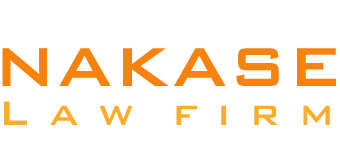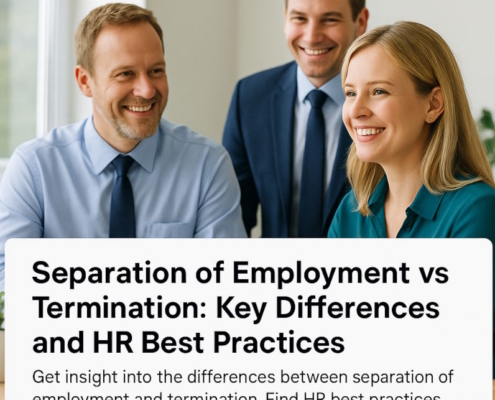Introduction
Documentation and employee records must be retained by employers for a specific period of time. Federal regulations, however, vary based on the kind of paperwork. Some records or documents need to be stored for years after a person leaves your company, while others can be thrown out much earlier.
Many HR professionals ask, ‘How long do you need to keep employee files?’ The answer depends on federal and state regulations. We have created a thorough guide that will outline which records HR professionals should preserve, how to do so, and how long to do so.
What documents, as an employer, do you need to maintain, and how long do you need to keep employee files?
Let’s quickly review the personnel records that HR managers are required to maintain, even after an employee has departed for other options.
- After termination, employee personnel records are kept on file for four years, or six years in certain states
Employers should maintain their employees’ personnel files in case they need to provide necessary paperwork, update data on retirement benefits, and other things. Records have to be kept for a minimum of four years after the person is hired. It holds true regardless of whether they leave the company.
For one year beyond the date of dismissal, employers are required by the Equal Employment Opportunity Commission to maintain/preserve all personnel and employment records. They include applications for employment, requests for adequate accommodations, and other recordkeeping requirements.
Therefore, four years is an overreach in official terms. However, there are certain justifications for considering keeping records for more than a year.
Future employers can, for instance, ask for records of previous performance reviews. It makes sense for employers, employees, and you to have additional conditions of employment, such as training requirements or layoffs. Although it sounds like you’re trapped with a ton of paperwork, that’s not the case.
Keeping records is made simple with an all-in-one HRIS system. It never erases employee records and makes sure that files pertaining to terminated employees don’t take up space on your desk or system.
When deciding “How long do you need to keep employee files?” remember that personnel documents, payroll records, and tax documents each follow different federal guidelines.
- Payroll and tax records for employees: Four years following termination, or six years in certain states
You can stay in compliance with several federal and state standards by using this information. Even if an employee exited the organization years ago, corporate tax filings frequently require SSNs, addresses, pay rate information, and more.
This type of record-keeping has many details, which we can discuss in more detail later.
- Records of hiring or recruitment: At least a year
These documents are essential for creating a well-informed applicant tracking plan. Make sure that your staffing solution can record all of the discussions you, hiring supervisors, and other stakeholders have about prospects, including interview notes. Use an HRIS to protect your records because email chains can be lost or erased.
- Benefits information for employees: six years after they leave the company
Plan paperwork, Form 5500, election forms, financial statements, plan termination files, trust reports, COBRA documentation, 401(k) forms, and additional support documents should all be kept on file by employers.
- FMLA Medical Records: 3 years.
- HIPAA Medical Records: 6 years.
- OSHA Records: 5 years.
- Records under Title VII: 1 year.
What forms do employers need to maintain, and how long?
Certain forms must be kept for compliance reasons, even though some records include many forms, sets of notes, etc.
- Form I-9: one year following termination or three years following the employee’s date of hire, whichever comes first. An employee’s ability to lawfully work in the US is attested by Form I-9. Every worker’s Form I-9 must be kept on file by the employer, per federal law.
Maintaining Records of Payroll, Taxes, and Benefits: Why should HR do it?
Companies need to retain all payroll, sales, and procurement records for a minimum of three years (mandated by the Department of Labor).
Additionally, the DOL mandates that businesses maintain wage records for two years, including time cards, hourly rate tables, job assessments, collective bargaining contracts, work schedules, and salary change records.
Additionally, after the fourth quarter of the filing year, employers must keep employee tax documents for four years.
Failing to understand “How long do you need to keep employee files?” can expose your company to compliance risks during audits by the DOL, IRS, or EEOC.
The IRS states that the following should be included in the tax records:
- Your employer’s identification number
- Dates and amounts of all pension, annuity, and wage payments
- The amount of tips that were reported
- The in-kind wages’ fair market value
- Employees’ and receivers’ addresses, names, social security numbers, & professions
- Any Form W-2 employee copies that were sent back to you because they couldn’t be delivered
- Employment dates
- When employees and receivers were paid when absent because of illness or accident, as well as the amount & weekly rate of payouts you or another party gave them
- Copies of income tax withholding papers for both employees and receivers (W-4, W-4V, W-4P, and W-4S forms)
- Your tax deposit dates and amounts
- Copies of the filed returns
- Documentation of tips given
- Documentation of fringe benefits rendered, including proof
How do employers need to handle documents?
HR audits ought to always be carried out by organizations to identify the advantages and disadvantages of their present recordkeeping methods. Audits will assist them in maintaining compliance, making sure the right file systems have been put in place, and keeping track of all required data.
By knowing “How long do you need to keep employee files?” you protect your organization from fines and simplify audits.
Although businesses are allowed to store information electronically or on paper, the majority of business executives concur that the most trustworthy and effective method to handle employee paperwork is to invest in a reliable HRIS system. Businesses should incorporate their HRIS system immediately into their recordkeeping and compliance guidelines. Employers can greatly improve their compliance levels by streamlining the recordkeeping process with the use of an HRIS when used properly.
HR departments are usually in charge of sending out a variety of notifications, many of which require acknowledgment from workers. Employees may frequently be asked to sign these notifications as well. Records that need employee involvement should be managed via a fully connected HRIS system that provides employees with electronic access to the records. A feature that enables administrators to upload all signed notifications and paperwork should also be included. Whenever there is an audit, these steps/precautions will help you stay in compliance.































